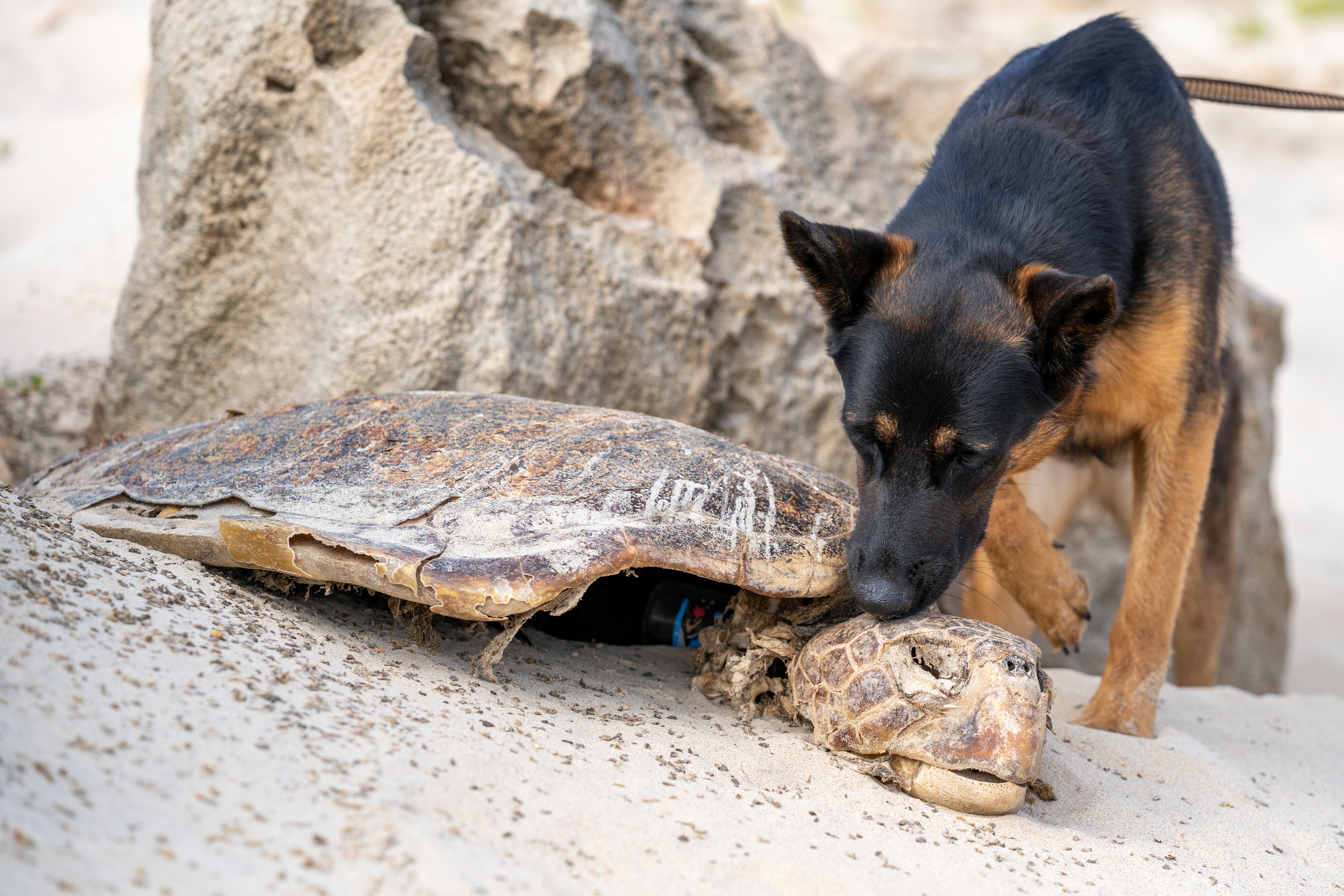

Dogs have a highly developed sense of smell that enables them to locate hidden objects and follow traces of odorous objects. Thanks to their excellent ability to perceive acoustic and olfactory impressions, they are the ideal complement to humans in detecting difficult-to-see situations despite the darkness. Because of this profile, conservation dogs can provide valuable services in tracking and tracing poachers, for example. Dogs are also increasingly used for research, surveillance and protection purposes on sea turtle nesting beaches.
The training of the dog handlers and the conservation dogs is done by an expert dog trainer. The dog trainer spends at least 6 weeks per year on the project side and accompanies the team with online trainings.
The dogs' most important task is to search larger areas during beach patrols in order to detect unauthorised persons. Furthermore, they are specially trained to detect turtle meat and are able to find it in travellers' luggage at ports and airports, as well as in houses and cars. The dogs are also trained in mantrailing. This means that they are able to follow poachers who have left objects such as clothing, knives or ropes at the scene of a crime to which their scent adheres. This supports the local law enforcement authorities to track and prosecute poachers.
- a dog trainer who will supervise the project on a regular and long-term basis
- suitable dogs for which training as a conservation dog is possible
- dog handlers, who have a special talent and interest in the care and training of the dogs
- Specialized equipment which allows the team to provide the dogs with a good quality of life (food, medication, cooling blankets etc) and mobility (specially adapted car)
- Dogs are living creatures that can also suffer injuries and become incapacitated. As we are already unable to use one dog as a working dog anymore, we are currently training 3 dogs in parallel in order to minimise the risk of failure.
- We started accompanying the dog team with the drone. In flight training and tactical lessons, the rangers learned to radio the information generated by the aircraft to the team on the ground. This allowed us to significantly increase the safety of the dog team on the ground.
- Apart from continuous training, the team also uses the sea turtle off-season to educate communities about our work and more broadly about sea turtles and environmental conservation. We organize events with schools and bring the dogs along to demonstrate their skills to the children. The dogs really capture the attention of children, which allows us to have important discussions about conservation while they interact with them.